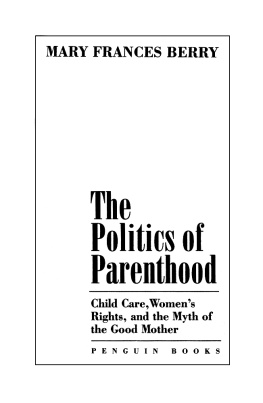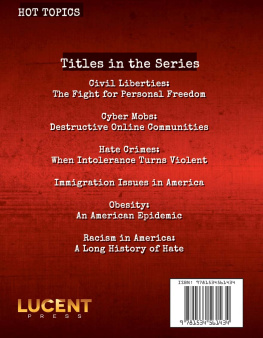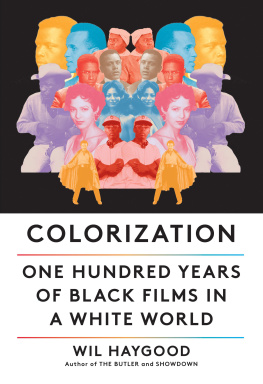Mary Frances Berry - Black resistance, white law : a history of constitutional racism in America
Here you can read online Mary Frances Berry - Black resistance, white law : a history of constitutional racism in America full text of the book (entire story) in english for free. Download pdf and epub, get meaning, cover and reviews about this ebook. year: 1994, genre: Politics. Description of the work, (preface) as well as reviews are available. Best literature library LitArk.com created for fans of good reading and offers a wide selection of genres:
Romance novel
Science fiction
Adventure
Detective
Science
History
Home and family
Prose
Art
Politics
Computer
Non-fiction
Religion
Business
Children
Humor
Choose a favorite category and find really read worthwhile books. Enjoy immersion in the world of imagination, feel the emotions of the characters or learn something new for yourself, make an fascinating discovery.

- Book:Black resistance, white law : a history of constitutional racism in America
- Author:
- Genre:
- Year:1994
- Rating:3 / 5
- Favourites:Add to favourites
- Your mark:
- 60
- 1
- 2
- 3
- 4
- 5
Black resistance, white law : a history of constitutional racism in America: summary, description and annotation
We offer to read an annotation, description, summary or preface (depends on what the author of the book "Black resistance, white law : a history of constitutional racism in America" wrote himself). If you haven't found the necessary information about the book — write in the comments, we will try to find it.
Black resistance, white law : a history of constitutional racism in America — read online for free the complete book (whole text) full work
Below is the text of the book, divided by pages. System saving the place of the last page read, allows you to conveniently read the book "Black resistance, white law : a history of constitutional racism in America" online for free, without having to search again every time where you left off. Put a bookmark, and you can go to the page where you finished reading at any time.
Font size:
Interval:
Bookmark:
PENGUIN BOOKS
BLACK RESISTANCE/WHITE LAW
Mary Frances Berry is a lawyer, policy analyst, scholar, and chairperson of the U.S. Civil Rights Commission. She is currently Geraldine R. Segal Professor of American Social Thought and a professor of history and law at the University of Pennsylvania. Her most recent book is The Politics of Parenthood , also available in Penguin.
Black
Resistance
White
Law
A History of
Constitutional Racism
in America
Mary
Frances
Berry

PENGUIN BOOKS
PENGUIN BOOKS
Published by the Penguin Group
Penguin Books USA Inc., 375 Hudson Street, New York, New York 10014, U.S.A.
Penguin Books Ltd, 27 Wrights Lane, London W8 5TZ, England
Penguin Books Australia Ltd, Ringwood, Victoria, Australia
Penguin Books Canada Ltd, 10 Alcorn Avenue, Toronto, Ontario, Canada M4V 3B2
Penguin Books (N.Z.) Ltd, 182190 Wairau Road, Auckland 10, New Zealand
Penguin Books Ltd, Registered Offices: Harmondsworth, Middlesex, England
First published in the United States of America by Prentice-Hall, Inc. 1971
This revised and updated edition published by Allen Lane The Penguin Press,
an imprint of Viking Penguin, a division of Penguin Books USA Inc., 1994
Published in Penguin Books 1995
Copyright Mary Frances Berry, 1971, 1994
All rights reserved
THE LIBRARY OF CONGRESS HAS CATALOGUED THE HARDCOVER AS FOLLOWS :
Berry, Mary Frances.
Black resistance/white law: a history of constitutional racism in America/Mary Frances
Berry.Rev. ed.
p. cm.
Includes bibliographical references.
ISBN: 978-1-101-65085-1
Afro-AmericansCivil rights. Afro-AmericansHistory.
Afro-AmericansLegal status, laws, etc. I. Title.
E185.61.B45 1994
323.1196073dc20 939089
Except in the United States of America, this book is sold subject to the condition
that it shall not, by way of trade or otherwise, be lent, re-sold, hired out, or otherwise
circulated without the publishers prior consent in any form of binding or cover
other than that in which it is published and without a similar condition
including this condition being imposed on the subsequent purchaser.
For my mother,
Frances Berry Wiggins,
and Minerva Hawkins,
teacher and friend
Law and order must prevail has become the clich of the 1960s and the biggest lie, because the American black man has never known law and order except as an instrument of oppression; and it has prevailed upside his head at every available opportunity. It exists for that purpose. The law has been written by white men, for the protection of white men and their property, to be enforced by white men against blacks in particular and poor folks in general.
Julius Lester
Look Out, Whitey! Black Powers Gon Get Your Mama!
Preface
This book is an attempt to describe and analyze constitutionally sanctioned violence against blacks and violent suppression of black resistancethe outgrowth of a government policy based on essentially racist, not legal, concernsthroughout the American experience.
Black people have been a disquieting presence in America since the arrival of the first twenty Africans at Jamestown in 1619. To most blacks, their status, usually as slaves until 1865 and as second-class citizens thereafter, has been unacceptable; to some, it has been intolerable. Before 1865, in addition to aiding in the suppression of slave revolts, the national government ignored or approvedon constitutional groundswhite mob violence directed at blacks and their few white supporters even when local officials participated in the violence. Those blacks who did not become involved in conspiracy and rebellion before the Civil War were not necessarily docile; they lived in the grip of a system of violent control institutionalized under the Constitution. The years since Reconstruction, when blacks became nominally free, are littered with incidences of white riots against blacks, burnings of black homes and churches, and lynchings, while federal and local law enforcement agencies stood idly by. And while federal law enforcement disregarded white violence, pleading lack of jurisdiction under the Constitution, it endorsed and contributed to rigorous campaigns of surveillance and control of rebellious blacks, using constitutional military force against them with impunity.
Whether its policy was action or inaction, the national government has used the Constitution in such a way as to make law the instrument for maintaining a racist status quo. Some legal theorists might describe the American political system as one in which law represents the will of the majority while providing room for the protection of minority rights, but this is not an accurate description of the system in operation. Though the Bill of Rights, the Civil Rights Act of 1866, and the Fourteenth Amendment purport to protect individuals in their lives, liberties, and property, these ringing phrases have in fact afforded little protection to black people as a group. Law and the Contitution in the United States have been a reflection of the will of the white majority that white people have, and shall keep, superior economic, political, social, and military power, while black people shall be the permanent mudsills of American society.
The upsurge in racial intimidation and violence in recent years led me to believe that a new edition of this book would be timely and useful. My general conclusionthat the implementation of the law by federal executive branch officials perpetuated racial subordinationremains valid today. Millions of African-Americans, whose lives have improved enormously due to the social and economic changes of the last several years, nonetheless are at disproportionate risk of police abuse. They also remain largely unprotected by their government from racially motivated violence perpetrated by groups and individuals. New victims of racial violence have added their names to the rolls of those injured or killed because they were black. In most instances todays assailants, as yesterdays, have escaped with little or no punishment for their deeds. The Rodney King incident in Los Angeles in 1991, the Michael Griffith murder in Howard Beach in 1986, the murder of Yusef Hawkins in Bensonhurst in 1989, and the shooting of National Urban League President Vernon Jordan in 1980 are only the most widely publicized examples of a familiar story.
Throughout the country increases in bigotry, racial intimidation, and violence have been documented by the United States Department of Justice, Community Relations Service, and the Federal Bureau of Investigation as well as by private groups such as Klanwatch. Experts agree that the crimes are probably underreported. Many victims do not report their abuse to police, and police prefer not to identify incidents as racially motivated.
Font size:
Interval:
Bookmark:
Similar books «Black resistance, white law : a history of constitutional racism in America»
Look at similar books to Black resistance, white law : a history of constitutional racism in America. We have selected literature similar in name and meaning in the hope of providing readers with more options to find new, interesting, not yet read works.
Discussion, reviews of the book Black resistance, white law : a history of constitutional racism in America and just readers' own opinions. Leave your comments, write what you think about the work, its meaning or the main characters. Specify what exactly you liked and what you didn't like, and why you think so.









